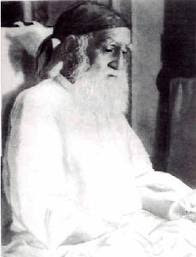Aamir Khan filmography And Family Background
| Nicknames | A.K. AK Mr. Perfectionist Tom Hanks of India Ace of Bollywood Ace Khan | ||||||||||||||
| Height | 5' 5" (1.65 m) Aamir was first introduced as a child artiste in the 1970's hit Yaadon Ki Baaraat (1973) -- he was the youngest child in the trio. He then concentrated on school and became a state tennis champion for Maharashtra. Aamir fell in love with the girl next door in the meantime. He proposed to her the day he turned 21, and she accepted. But apparently, there was opposition since she was from a Hindu family and he, from a devout Islamic one. So, they eloped, got married and returned to their homes. Aamir's wife Reena even appears in the song "Papa Kehte Hain". His performance in Earth (1998) as the Ice-Candy man has received rave reviews from Indian and International critics. Using classic "method acting" and adopted an acting technique inspired by his seniors Sanjeev Kumar, Rajesh Khanna, Dev Anand and Shammi Kapoor, Aamir acts in all genres of Indian films - comedy, action, drama and romance. He is regarded as complete Indian actor of the post 1990 generation of actors for his diverse choice of roles and films.Aamir khan was born on March 14 1965 in Holy Family Hospital in Bandra, Mumbai in India in a conservative Muslim family which has been part of Hindi Film Industry for a long time. Aamir first came on screen as a child artist in his Uncle Nasir Hussain's production Yaadon Ki Baaraat (1973), it was not a real part just a blink and miss appearance in the title song of the film. He again appeared as a child artist in the film Madhoshi (1974). Much later he appeared in the art film Holi (1984)along with his friend and later his director Ashutosh Gowariker, the film also starred Naseeruddin Shah. Subsequently he went on to become the state tennis champion of Maharashtra. Sometime before his debut film Aamir fell in love with a girl in his neighborhood Reena. Since she belonged to a Hindu family and he from devout Muslim family, they faced opposition and therefore they married secretly, later they revealed it to the world after his debut movie as lead Qayamat Se Qayamat Tak(QSQT) as a leading man was released in 1988, the film was a run away success and he achieved instant stardom (the film is now considered a classic of Hindi Cinema)and not only that the film was successful in turning the tide away from action centric violent films to family oriented romantic musical dramas in Hindi Cinema, the luminous example of which are MPK (1989), HAHK (1994) and DDLJ (1995). In his second film Raakh (a small, art film) he did a complete opposite role from the lover boy of his first film, his breakthrough performance in this film bagged him the National Film Award of Special Jury. Afterwards he signed a few not so good films which failed at the box office. In the year 1990 he delivered the biggest grosser of the year in the form of Dil and since then he has not looked back giving several commercial and critical hits, his superlative performances include films like Dil (1990), Dil Hai Ke Manta Nahin (1991), Daulat Ki Jung (1992), Jo Jeeta Wohi Sikander( 1992), Hum Hain Rahi Pyar Ke( 1993), Parampara (1993), Andaz Apna Apna (1994), Baazi( 1995), Rangeela (1995), Akele Hum Akele Tum (1995), Raja Hindustani (1996), Ishq (1997), Earth(1998), Ghulam (1998), Sarfarosh (1999), Dil Chahta Hai( 2001), Lagaan (2001), Mangal Panday (2005), Fanaa( 2006) and Rang De Basanti (2006). In 2007 he turned director with the film Taare Zameen Par which not only brought him immense critical acclaim but was a huge box office success. Many of his films are considered as cult classics like QSQT, Lagaan, Dil Chahta Hai, Range De Basanti, Jo Jeeta Wohi Sikander and Andaz Apna Apna. He divorced his first wife in December 2001 and married Kiran Rao in December 2005. In 2008 his first all out commercial action film Ghajini went on to become the highest grossing film of its time in Indian Cinema and 4th highest inflation adjusted, grossing a total of Rs.226 on the worldwide box office and the first film to cross 100 crores on the domestic Indian box office, making a total of Rs.115 crores. This record didn't last long though when his next release 3 Idiots went on to shatter not only the highest grosser record but many more. It not only made the highest opening first day, first weekend and first week records but subsequently continued to shatters many record on the following weekends and weeks, making many circuits records on the way. It made a total of Rs.202 crore domestically and Rs.400 crores on worldwide box becoming the highest overseas grosser till date, a staggering feat given that no other film has even come close to making Rs.100 crore on the domestic box office till date, except his own Ghajini last year. Aamir is said to be the actor who first started the trend of actor's working in one film at a time, when the others worked in four or five at the same time. He is also known to shun popular film trade magazine awards like Filmfare, Star Screen etc as he doesn't have trust in their credibility and transparency. Recently he was awarded the third highest civilian honour Padama Bhushan by the government of India. Aamir Khan, a method actor, his range of characterizations remains unparalleled and because of this diversity and his ability to portray different characters believably on screen, today he is regarded as not only one of the biggest Superstars but also one of the finest actors of Indian Cinema. Spouse (2)
Trivia (46)
Was offered the role of Rahul Mehra in Darr (1993).
Refuses to accept the usual awards from Indian trade magazines such as Filmfare.
Known as perfectionist who insists on getting a finished script before committing to a film and also refuses to work on more than one film at a time, both very unusual for Bollywood where actors usually work in several films at a time and script details are often improvised on the day of shooting.
One of the three Khans that ruled Bollywood in the 90s. The other two are Salman Khanand Shah Rukh Khan.
Nephew of Nasir Hussain
Cousin of Mansoor Khan
Files for divorce from wife Reena on December 9, 2002.
Awarded Padma Shri India's fourth highest Civil Honour in the year 2003 by the Government of India.
Uncle of Imran Khan.
Has 2 children with ex-wife Reena: a son, Junaid, and a daughter, Ira.
Mother is Zeenat Hussain. Sometimes she is referred to as Zeena Hussain.
After his first marriage he took another flat in the same building where he lived with his parents, and started living there.
Has been a big fan of Alfred Hitchkock stories.
Visited Pakistan for fund raising of Shaukat Khanum Cancer Hospital on invitation by the cricketer Imran Khan.
Formed a popular on-screen pair with Juhi Chawla
The Press Trust of India reported Khan will marry girlfriend Kiran Rao in Panchgani, India on 1 January 2006. It later reported Khan and Rao married in a small ceremony at his home in Mumbai, India on 28 December 2005.
Highest paid actor in Bollywood.
Time magazine refers to him as the Indian 'Sean Penn'.
Best friends with Juhi Chawla & Rani Mukherjee.
His ancestors hail from Afghanistan.
Has a reputation for shunning award ceremonies and avoiding the glare of the media.
Turned down Madame Tussaud's offer to immortalize him in a wax statue.
Cites Daniel Day-Lewis and Dilip Kumar as his favorite actors.
Is a Tennis-enthusiast, and particularly admires Roger Federer.
He got awarded the Padma Bhushan India's third highest Civil Honour in 2010 by the Government of India.
His salary is less for acting in certain movies because he becomes a stakeholder and shares a certain percentage of profits from the movie.
Is very good friends with superstar Salman Khan, with whom he worked with in the 1994 cult film Andaz Apna Apna. His other close friend is Rani Mukerji, with whom he was been friends with since her second film Ghulam in 1998.
Has the highest grossing Indian film of all time with PK.
Was the first Bollywood actor to cross the 100 crore mark with his 2008 film Ghajini, which became the highest grossing film of all time until his next release 3 Idiots.
His home production, Lagaan, in which he also starred in, was the third Indian film ever to be nominated for an Oscar.
Was credited as "Aamir Hussein" in his first film Holi.
Currently busy shooting for Kunal Kohli's Fanaah, opposite Kajol. [February 2006]
Shooting for 'Fanaah' [February 2006]
Busy shooting for Three Idiots in Ladakh, India [October 2008]
In Chennai, shooting for the remake of Ghajini [July 2007]
Busy shooting for Rakyesh Om Prakash's Rang De Basanti
New Zealand, Busy Shooting climax of Dhoom:3 Back In Action. [March 2013]
In 2013, received Honorary Doctorate by Maulana Azad National Urdu University (MANUU) for his distinguished contribution to the Indian cinema and entertainment industry.
Has a half brother from his father's second marriage. His brother's name is Hyder Khan.
He was originally signed for Sahebzaade with Chunky Pandey but later opted out.
Former brother in law of actress Eva (Kareena) Grover. Eva was married to Aamir's youngest brother Hyder Ali Khan.
Youngest brother Hyder Ali Khan is also a actor. He acted in the film "Trump Card" in 2010. Hyder was born from Tahir Hussain's second marriage to Shanaz.
Actor Ali Zafar is also related through marriage to Indian Bollywood superstar, Aamir Khan. Ali Zafar's wife, Ayesha's father has a cousin whose mother is the cousin of Aamir Khan's mother, Zeenat Hussain! Apparently, Aamir Khan was quite taken aback when Ali Zafar pointed out their relationship to him as it was news to him.
Was offered Vicky Arora's role in Yalgaar.
Sister Nikhat is married to Santosh Hedge. They have two children Seher and Shravan.
Personal Quotes (10)
Every film I do means a lot to me. The failure of Mela, definitely made a difference to me. I am not comfortable with the idea of my films not releasing to their full potential.
"There's a lot of talent both in India and Pakistan. I think the talent in both these two countries should come together and entertain the world audience. If the right offer and opportunity comes my way, I'd love to do a movie in Pakistan." (12 May 2006)
Film making is like fighting a war with leadership at the front.
I found that what happened 150 years ago was happening again with Americans entering other countries and exploiting them but pretending they were doing a favor. It was this contemporary feel that attracted me.
My son is a harsh critic.
I enjoy the love I receive from my fans and my audience. But I think I know what is real for me and what is not.
A star needs to have style. Unfortunately I have very little. But Salman [Khan] has it all.
If a star comes close to holding the sway that Madhuri Dixit or Kajol did, it is Rani Mukerji. She pays attention to her work, has matured and become experienced with time.
Rani is one of my closest friends, we can talk about anything.
Rani [Mukerji] is a close friend. She is someone I am extremely fond of. We share a very good relationship. We can depend on each other.
Salary (5)
|




























.jpg)

